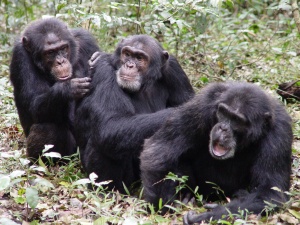Turn on the discovery or science channel and you might see a cheetah stalking a gazelle, moose locking antlers over mating rights or a territorial hippo challenging intruders. However, that image of aggression is being challenged with more and more news stories and papers like this one about peacemaking orangutans.

In this study, Japanese scientists saw repeated displays of intervention by orangutans in a group in captivity when an older female attacked a younger female orangutan that had recently been introduced to the group. Gorillas and Chimpanzees have also been seen to exhibit such behavior. This episode also fits in what is a rapidly growing understanding of the animal kingdom’s propensity to engage in reconciliation and empathy as well as displays of altruism. The Bonobo, another one of the great apes, have shown the ability to share food and also engage in reconciliation. Social grooming has long been known to be a form of conflict resolution amongst primates and chimpanzees even kiss and hug after fights.
Such displays might not be limited to only primates either. In one study, scientists found that mice that were housed with each other were more sensitive to pain due to the fact that they were able to see other mice in pain. That display of empathy was believed to be an example of emotional contagion, whereby some of the mice were influenced by the emotions they saw in others. In another example that probably won’t shock dog owners, scientists found that a human’s yawns may be contagious to dogs. Empathy and altruism isn’t necessarily restricted to land based creatures, as scientists have repeatedly seen dolphins coming to the rescue of their own and even other species. If you’re interested in more stories about the animal kingdom’s softer side look for The Age of Empathy by Professor Fans de Waal in your local library.




